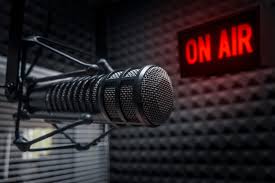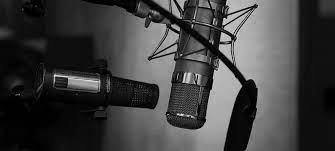The condenser microphone remains one of the top choice or best choice microphone for all voice over and voice recording artists, and other people that can make use of this microphone includes producers, studio use, and other professional users. What makes this microphone very popular? What is a condenser microphone? How does a condenser microphone work? These are some of the questions we will be treating in this post, so stick around.
Generally speaking, you will find two different types of microphone when you visit the market or shop online for a reliable microphone. This microphone types includes the condenser and dynamic microphones. Picking up detailed sound in a studio environment where audio sounds needs to be tightly controlled is what the condenser microphone is used for, and the best environment to make use of a dynamic microphone is in a live setting.
Picking up nuance and subtle sounds instead of extremely abrasive and loud sounds is the major reason why people opt to make use of the condenser microphone in a studio setting, making it possible for this microphone to reproduce warm and natural sounds, clear audio signal, and crisp sound quality. Before you go ahead to shop for condenser microphone, keep in mind the level of performance this type of microphone delivers.
Content Navigation
Types Of Condenser Microphones
Even though there are different types of condenser microphones, it comes down basically to two major types. These are the large and small diaphragm condenser microphones, and these condenser microphone types are what we will be looking at next in this interesting review. Each of this microphone has it characteristic way of capturing sounds, and they can be used in different ways in terms of recording.
Large Diaphragm Condenser Microphone
The type of microphone that makes use of a large diaphragm are the ones that get their audio signals while placed in a side facing position. The purpose for this is because the diaphragm has exceeds an inch in length which makes the surface area of the capsule bigger. Furthermore, microphones with large diaphragms are positioned in a stationary position when placed in a recording booth.
Most microphones that have large diaphragmatic designs provide full and rich low end sounds since they are capable of providing a widening effect that has the ability to fill up every audio space.
Small Diaphragm Condenser Microphone
The small diaphragm microphones are also described as pencil microphone due to their small sizes, and they are also known to have thin and long designs. Small diaphragm microphones are the opposite of large diaphragm microphones in the sense that they possess a diaphragm that is an inch less in length. Anyone making use of this microphone is likely to position it in a front facing position which directs energy to the top of the microphone.
The best way to use a small diaphragm microphone is from a mounted position or desktop position in the studio. Picking up high end and transient sounds is another benefit of using a small diaphragm microphone.
How Does A Condenser Microphone Work

For you to know how a condenser microphone works, you need to know each and every component of the condenser microphone. This way, explaining how a condenser microphone works will help you know how these components relate with each other. The components of a condenser microphone includes;
- Backplate
- Capsule
- Diaphragm
- Impedance converter
The truth is these components find a way to interact with each other in order to record and transfer sound, and a condenser microphone has a capsule which has a membrane coated in gold. The purpose of coating this membrane in gold is for it to conduct electricity, and the membrane is positioned in close proximity with the microphones backplate. The diaphragm will vibrate when sound waves hits it, and it vibrates in close proximity to the backplate.
What this means in a nutshell is the microphone goes through physical changes in air pressure when there is a vibration between the membrane against the metal backplate that is found inside the capsule. Pressure difference between the backplate and the diaphragm can be recorded in voltage, and they end up getting translated as sound waves whether on a recording software or in a recording device.
In order for a condenser microphone to function fully, it requires external power for that. The reason is because it produces a lot of voltage but fails to produce a current that is relative to the amount of power needed to make a recording. This is where an impedance converter comes in as it helps in enhancing signals and making the microphone very powerful when working with modern and innovative equipment.
Advantages Of A Condenser Microphone
One thing about condenser capsules is they are sensitive to sounds, so capturing rich and subtle details is what they are very good at. This is one advantage other microphone types might not provide you with, and this is why the condenser microphone is at an advantage when used for voice overs and recording vocals. It can also be used when working with an acoustic instrument with focus being placed on tonality.
You can trust a condenser microphone to deliver good results when used for capturing group sounds. This is because they are built to be positioned stationary, so placing them in the middle of a group means they will capture every sound. This helps in recording more than a single instrument which helps in reducing post processing time.
Disadvantages Of Condenser Microphone
Being too sensitive to sound is an advantage of a condenser microphone that can also be a disadvantage. This means condenser microphones can get easily overwhelmed by loud sounds which could lead to sound distortion at the end. You will notice this when a condenser microphone is used for amplified signals or for recording drums.
On the other hand, very high volume is capable of causing damage to the diaphragm of a condenser microphone. This tells you that the diaphragm of a condenser microphone has a fragile design and should be carefully handled.
Final Note – How Does A Condenser Microphone Work
That is all you need to know about the basic before how a condenser microphone works, and it remains your go-to microphone if you want to obtain subtle and crisp sound when recording. This microphone is versatile when used correctly, and treating this microphone with care means you have an instrument that will last for a very long time.
Related Posts
Best Camera Microphone For Live Music
How Does A Dynamic Microphone Work

